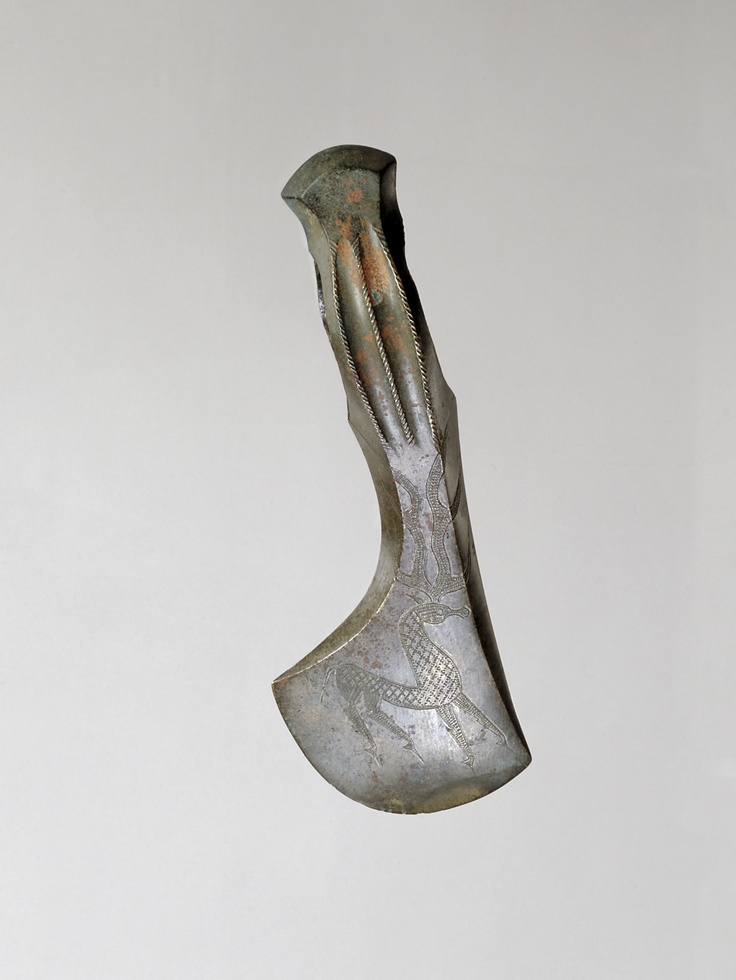
Bronze
L: 17.19 cm. Max. W: 6.88 cm
Allegedly from Kars
Northern Central Caucasus, Koban Culture
9th-7th century B.C.
Solid-cast, extensively chiselled and punched in the cold, very carefully burnished and polished.
Condition: metal, a rich copper colour; patina, shades of greyish green to bluish green with rust-coloured patches and a spot or two of green.
A nick to the outer edge of the oval shaft hole and minute dents to the edge of the blade.
Characteristic of the best of the type, this example is highly plastic with facets of varying curves and slightly convex and concave planes, each blade surface decorated with a fleet-footed prancing stag, its antlers ending in flame-like points. Three closely hatched ribs strengthen and adorn the outer sides of the shaft hole.
Such axe-heads were employed in combat, must have had a cult significance and were probably also emblems of power [1].
The present example is characteristic, like the belt clasp no. 210, of the imagination usually inherent in such artefacts which are wont to be found associated with burials in stone cistas.
Mentioned:
Kozloff, A.: Animal Style Bronze Art and Its Closest Parallels: A Bronze Belt and Axe Head, BClevMus vol. 81 no. 5, May 1994, p. 139 n. 22.
1 Domansky, Y.V.: Avant les Scythes, préhistoire de l'art en U.R.S.S. (Paris, 1979), cat. no. 143, p. 158.